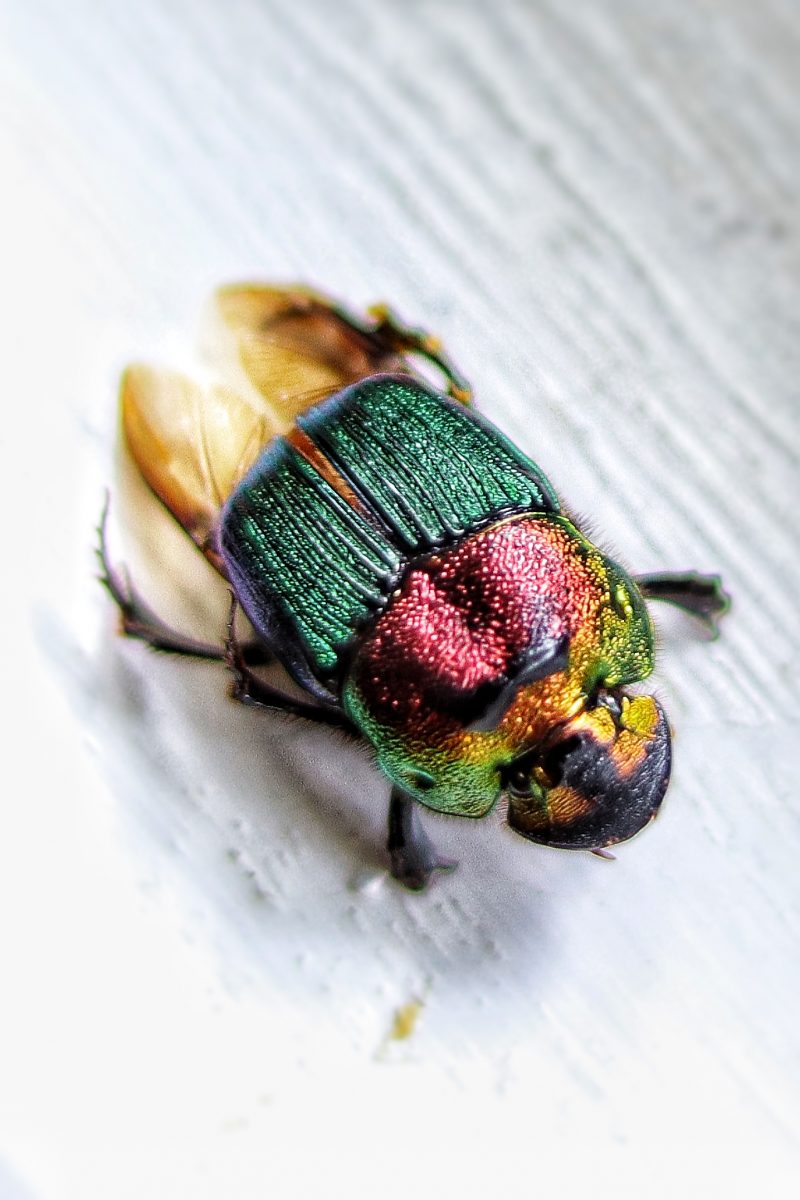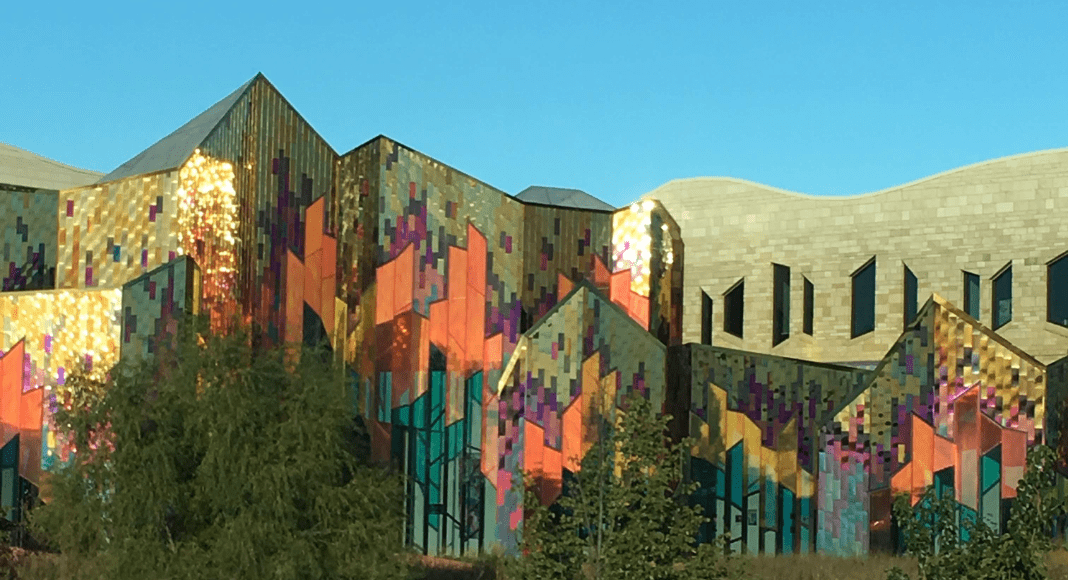
We continue to mourn the untimely passing of our beloved compatriot DePat, known in real life as Susie Sampson, and also as author Patricia Holden.
Until we have a dedicated author for the Tuesday daily open thread, I will be posting “placeholders” like this one, which may or may not be spiced up with additional content.
Gudthots will take DePat’s old Thursday daily open thread.
Please notify me in advance if you would like to post anything in lieu of the Tuesday placeholder. We welcome all content – the topic doesn’t matter.
W

Hidden Colors, Rainbows and MAPs
Follow The Dichroic Rabbit – From the Roman Empire, through Cabal Kingmakers, to Ukrainian Bio Labs and Beyond
This is going to be a weird, if not wild post. And I’m bringing a friend!

In some ways it’s very “Gail” – in other ways it’s very “Valerie”. It’s also very “Steve” and a bit “para59r”. But I will try to keep it as WOLFM00N as possible, whatever that means.
Valerie said THIS on Thursday, March 6, 2025:

My response explains this very post and it’s odd title:

I will try to get through this quickly.
This cup Valerie is asking about, is well-described on Wikipedia:
https://en.wikipedia.org/wiki/Lycurgus_Cup

The most magnificent of all ancient #Roman ‘cage cups’ is the 4th c. CE Lycurgus Cup, made of dichroic glass. In normal light, the glass appears milky green, when backlit, it glows a ruby red. The effect was achieved by adding silver and gold nanoparticles to the glass.

When viewed in reflected light, as in this flash photograph, the cup’s dichroic glass is green in colour, whereas when viewed in transmitted light, the glass appears red.
Dichroism – literally “two colors” – can come from a variety of physical phenomena.
LINK: https://en.wikipedia.org/wiki/Dichroism
The first time I ever saw this, during high school, it was also red-green dichroism – from chlorophyll. Yes – a simple suspension of chlorophyll in aqueous alcohol looks vivid green, until a flashlight is shown directly into it, in which case it glows RED from fluorescence of the chlorophyll.

Many phenomena will give rise to dichroism, which can be of many different kinds and degrees. All that is needed is for there to be a change in the spectrum of light leaving an object, which somehow depends on the specifics of the illumination of the object. “Di-” is used loosely, in that dichroism can include two or more – and includes “tri-“, “quatra-“, and even “poly-“.
Even more confusing, dichroism can refer to different lights being shined ONTO something together.
Steve has mentioned circular polarization of light. This can be used to investigate stereochemistry (the “handedness” of molecules) using a phenomenon/technique called circular dichroism. A.k.a. CD.
LINK: https://en.wikipedia.org/wiki/Circular_dichroism
To be almost too brief, CD is this. An equal mix of right-handed and left-handed light (thus dichroic) will notice the difference between right-handed and left-handed molecules, as well as the difference of either of these from unhanded molecules. CD can thus tell you about the handedness of a sample.

Note that an actual human heart is “handed”, but an idealized one is not.

So – “dichroism” is used two ways – for both (1) two (or more) kinds of light leaving an object, and (2) a sort of reverse scenario, in which two kinds of light impinge upon an object simultaneously. Wikipedia states it like this:
In optics, a dichroic material is either one which causes visible light to be split up into distinct beams of different wavelengths (colours) (not to be confused with dispersion), or one in which light rays having different polarizations are absorbed by different amounts.[1]
So now let’s answer, very specifically, Valerie’s original question: how does the Lycurgus Cup work? Well, I found a great answer. I don’t regard this as “settled science” – but this is very likely close to the truth.
LINK: https://everything.explained.today/Lycurgus_Cup/
Here is the relevant part.
The dichroic effect is achieved by making the glass with tiny proportions of nanoparticles of gold and silver dispersed in colloidal form throughout the glass material. The process used remains unclear, and it is likely that it was not well understood or controlled by the makers, and was probably discovered by accidental “contamination” with minutely ground gold and silver dust. The glass-makers may not even have known that gold was involved, as the quantities involved are so tiny; they may have come from a small proportion of gold in any silver added (most Roman silver contains small proportions of gold), or from traces of gold or gold leaf left by accident in the workshop, as residue on tools, or from other work. The very few other surviving fragments of Roman dichroic glass vary considerably in their two colours.[7]
The glass
It is estimated that to a conventionally composed Roman glass flux 330 parts per million of silver and 40 of gold were added: “These particles were precipitated as colloids and form a silver-gold alloy. When viewed in reflected light the minute metallic particles are just coarse enough to reflect enough of the light without eliminating the transmission. In transmitted light the fine particles scatter the blue end of the spectrum more effectively than the red end, resulting in red transmission, and this is the colour observed. Since it is impossible that the Roman artisans managed to add these incredibly low levels of silver and gold to the volume of the glass used to make the vessel deliberately, the levels were probably added at higher levels to a larger volume of glass-melt, and increasingly diluted by adding more glass.”[8] The particles are only about 70 nanometers across,[9] and embedded in the glass, so they cannot be seen by optical microscopy, and a transmission electron microscope is needed instead.[10] At this size they approach the size of the wavelengths of visible light, and a surface plasmon resonance effect takes place.[11]
TL;DR – the highly dilute metal nanoparticles interact with visible light, scattering blue and transmitting red. The result is greenish reflection and reddish transmission.
One other thing.
Although I can’t get into the details, my early learning about dichroisim is connected to my knowledge of “occultish things in academic science”. Thus, I was immediately calling for backup by Suspicious Cat as soon as I knew we were talking about dichroic glass.

The fact that the artistic subject of the Lycurgus Cup is mythology about what Aubergine refers to as “the old gods” is just a hint of the attraction this stuff holds for the more idolatrous humans.
Check out the cup’s recent history. COUGH, COUGH, COUGH.
The early history of the cup is unknown, and it is first mentioned in print in 1845, when a French writer said he had seen it “some years ago, in the hands of M. Dubois”.[41] This is probably shortly before it was acquired by the Rothschild family.[42] Certainly Lionel de Rothschild owned it by 1857, when the touring Gustav Friedrich Waagen saw it in his collection and described it as “barbaric and debased”.[43] In 1862 Lionel lent it to an exhibition at what is now the Victoria and Albert Museum, after which it virtually fell from scholarly view until 1950. In 1958, Victor, Lord Rothschild sold it to the British Museum for £20,000, £2,000 of which was donated by the Art Fund (then the NACF).[44]
The cup forms part of the museum’s Department of Prehistory and Europe rather than the Greece and Rome Department, and was previously on display, lit from behind, in Room 50. In 2015 it was on display with the new display of the Rothschild donation of the Waddesdon Bequest in Room 2A, with a changing internal lighting source that shows the colour change very effectively, though only one side of the cup can be seen. By October 2015 it was back in the re-opened Room 41.
While Room 41, where it was then displayed, was closed for refurbishment, from November 2012 to August 2013 it was on display with other British Museum pieces at The Art Institute of Chicago‘s Jaharis Galleries of Greek, Roman and Byzantine Art,[45] where it was very effectively displayed in a free-standing case, lit from above with changing light so that the colour change was clearly visible.[46][47] It is considered able to travel to important exhibitions and in 2008 was exhibited in “Reflecting Antiquity, Modern Glass Inspired by Ancient Rome” at the Corning Museum of Glass in Corning, New York, in 2003 at the Hayward Gallery in London in “‘Saved! 100 Years of the National Art Collections Fund”, and in 1987 in “Glass of the Caesars” in the British Museum, Cologne, Milan, and Rome.[48]
Oh, this fascination with dichroism doesn’t just start or end with the Roths.
Consider scarab beetles, many of which show dichroism due to nanostructural layering in their shell materials. Here is the rainbow scarab:

Interestingly, there is good evidence that such beetles, in which increasing color has to be balanced with decreases in structural strength, have undergone evolution of their shells primarily for color, rather than strength.
LINK: https://news.vt.edu/articles/2021/06/eng-research-beetle-shell-062021.html
And then I read this on Wikipedia.
The corporate headquarters of Amazon.com in Seattle, Washington, incorporates dichroic glass into the exterior of its high-rise building, reflecting light into various colors that depend on the time of day.[9]
The Museum at Prairiefire in Overland Park, Kansas,[10] which opened in May 2014, is devoted primarily to natural history. It borrows displays from larger museums and hosts at least two major traveling exhibits per year. Its striking glass exterior was designed to reference the intentional prairie fires[11] that were an integral part of farming life in Kansas. The glass is dichroic, which means that its color changes with the light of the day. The museum is itself a work of art.[12]
OK – let’s take a look at these.
Amazon first.
The dichroic glass is basically one tower in one building in a huge complex located in Arlington, VA, located conveniently close to CIA and Babylon On The Potomac. This is the SECOND headquarters campus of Amazon, after the first in Seattle.

LINK: https://www.glassmagazine.com/news/vitro-glass-helps-amazon-meet-its-daylighting-goals
NOW – allow this video to inform you about the whole complex.
Have I seen that helical building before? I could swear I have! And I’m not talking about the POOP EMOJI!

LINK: https://duckduckgo.com/?q=tower+of+babel&t=brave&iax=images&ia=images
OK, enough fun with the Bezos Site Number Two.
Let’s look at this other thing.
The Museum at Prairiefire?

Nice dichroic glass they’ve got all over the place, in a kind of mock stained-glass way.

Notice the “optical illusion” windows, suggesting a third dimension that is not there. The symbol of Meta (Zuckerberg, Facebook) does a similar thing. See if you can visualize in your head, how the weird symbol makes more sense in 3 dimensions.

Prairiefire appears to be the name of a development district in the Eastern Kansas suburb of Overland Park, including a park, a wetlands, a shopping center, and the aforementioned museum.

ANYWAY…..
Surely they wouldn’t refer to themselves as “The MAP” – right? Because that would be…….
https://visitthemap.org
OK. But surely they wouldn’t advertise any connection to the company that built biolabs in Ukraine, connected to pedophile Hunter Biden and his USAID-partnered (yes, read the link) company Metabiota or whatever – I mean…..

OK, yeah, but surely they wouldn’t throw all this stuff together with “let’s attract kids with dinosaurs” and…..

OK, but they DEFINITELY don’t have a huge focus on a preschool program for…..

LOOK! Just because you wander near any of this “naturalist/materialist-interesting” stuff, and you kick it over, and a bunch of things that sure look like creepy-crawlies run out in all directions, doesn’t mean we need to be suspicious – right? RIGHT?

OK. I am just gonna be blunt. This operation in Kansas may be perfectly innocent – as pure as the driven snow. And with my love for natural history, I am bound to think it’s a wonderful place. I have always loved dinosaur museums for kids. But my grandkids ain’t goin’ inside this place (or even outside) unless I am sitting IN THAT CLASSROOM watching every dang second of every dang minute of every dang day. Because if this place ain’t CATNIP FOR PEDOS, I don’t know what is.
SIGH.
And with that, I yield the floor to my fellow QTreepers. Have a great Tuesday!
W

